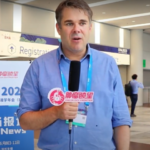
Deputy Director, Hematology Department, Peking University People’s Hospital.
From June 8th-11th, 2023, the 28th European Hematology Association (EHA) conference was held in Frankfurt, Germany. At the EHA meeting, Professor Jiang Qian’s team from Peking University People’s Hospital reported on the results of a study on reducing treatment doses for Chronic Myeloid Leukemia (CML) patients after achieving major molecular remission (abstract S158). During the conference, the “Tumor Watch” publication interviewed Dr. Qian Jiang, who elaborated on the current status of CML treatment, future prospects, and the initial intent and primary outcomes of the dosage reduction study.
Direction of CML Treatment Development
Dr. Qian Jiang: In recent years, the development of new drugs in the CML field has been rapid. In addition to imatinib, nilotinib, and dasatinib, which have been used for several years, and bosutinib and ponatinib, which are not yet available in China, there’s also asciminib, recently approved in the U.S. for treating patients resistant to ≥2 types of TKIs. Currently, combining early-stage drugs with the new drug asciminib shows promise. One is an ATP competitor, and the other targets the myristoyl binding site. Their combined use, acting through different mechanisms, has shown synergistic effects against compound mutations in cells and animal models. It’s effective against hard-to-treat blast crisis cell lines and animal models, strongly inhibiting BCR-ABL function. I believe that combining drugs with different mechanisms signifies a new direction in treatment, offering new hope for patients resistant to standard TKI treatment.
Balancing the Dilemma of Dosage Reduction: To Stop or Not to Stop Treatment
Dr. Qian Jiang: Long-term, even lifelong TKI treatment is necessary for many patients since many don’t meet the criteria for discontinuation. Even if they do, only half can successfully stop treatment. Over time, some lose their molecular response and need to restart treatment. This is because TKIs target the gene product proteins causing CML, not the causative gene itself. Theoretically, TKIs can’t cure CML but only suppress BCR-ABL cell proliferation. Maintaining deep molecular response requires continuous drug suppression. Only when CML cell counts are extremely low can patients possibly rely on their immune function to control the disease post-discontinuation. This means a robust immune response is crucial. Those with higher immune effector cell counts have a higher success rate in discontinuation, provided they’ve had a long enough treatment duration and a profound, persistent molecular response. Some experts say the prerequisite for stopping is not stopping, reflecting this situation. Our data shows a success rate of 80% for patients with 5 years and 50% for those with 2 years of MR4 or better, indicating that longer treatment and sustained profound molecular responses lead to higher discontinuation success. However, long-term medication can lead to side effects, possibly decreasing quality of life.
Indeed, some CML patients meet the discontinuation criteria but fear stopping due to the high costs paid in terms of physical health, finances, and mental stress. This makes discontinuation more than just a medical issue – it’s a societal one. For patients hesitant to discontinue, we explored dosage reduction to minimize side effects and its impact on life quality. Results show significant alleviation of side effects without losing efficacy, with 95% still maintaining a major molecular response, which suggests safety. Comparative studies found no difference in subsequent treatment effects or loss of prior effects between reduced and non-reduced dosage patients. Moreover, gradual discontinuation doesn’t reduce the success rate of sudden discontinuation. In fact, the success rate of gradual discontinuation is slightly higher, though not statistically significant. When a major molecular response is achieved but accompanied by certain risk factors, the risk of disease recurrence upon reduction is greater, such as in older patients or those not achieving MR4. Using sensitive digital PCR technology can better predict whether patients are suitable for dosage reduction, maintaining efficacy while minimizing side effects.
T315I CML
Dr. Qian Jiang: T315I mutations account for 15%-20% in CML-resistant groups. Our data suggests that among second-generation TKI-resistant patients, the T315I proportion is the highest, exceeding 30%. Furthermore, during CML blast crises or Ph-positive acute lymphoblastic resistance, the T315I proportion is even higher. Treating these patients is challenging since first and second-generation TKIs can’t overcome T315I resistance. However, new drugs capable of this are now available, offering more treatment options. Ponatinib was the earliest to overcome T315I resistance, followed by asciminib. Orelabrutinib from China has also shown effective results against T315I as revealed in studies presented at the ASH conference for five consecutive years. Orelabrutinib is a domestically developed drug in China. Its efficacy and safety have been validated among Chinese patients and subsequently among American patients, a matter of great pride.



